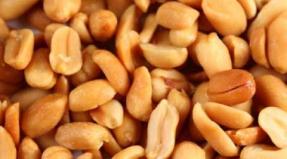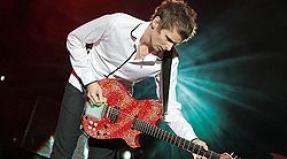The effects of alcohol on a teenager. Why do teenagers drink alcohol at all? The main causes of alcohol dependence in children
Drunkenness has always been one of the main troubles of Russia, but recent times an even more formidable problem emerged: adolescent alcoholism. According to statistics, by the age of 15, 75% of schoolchildren have tried alcohol at least once. Quite often teenagers develop beer alcoholism, the danger of which is usually underestimated. An addiction to stronger drinks is also often formed at a fairly young age. It is caused by various reasons, and the predisposition of the person himself and the environment plays a role.
Teenage alcoholism progresses rapidly, but most of the changes in the body caused by alcohol abuse at an early age are reversible. A serious danger is the social maladjustment of drinking adolescents, often pushing them to delinquency and crime. Since this age is characterized by a lack of criticality in assessing his own condition, a young alcoholic will never seek medical help on his own initiative. It is extremely important that parents notice something wrong in time and take measures to early stages adolescent alcoholism responds well to treatment.
Teenage alcoholism can be associated with both external (family or company influence) and internal (personality traits, trauma, illness) factors. Sometimes in families of alcoholics, convinced teetotalers grow up who are disgusted with alcohol, but quite often the children of drinking parents themselves begin to drink at a young age. This is due to a whole range of reasons:
- biochemical predisposition to drunkenness and rapid development alcohol addiction is inherited. Statistics show that 60% of adolescents' alcoholism is genetically determined;
- drinking parents often treat their child to low-alcohol drinks themselves, provoking beer alcoholism;
- children and adolescents copy the behavior of their parents, strive to imitate them in everything;
- children of alcoholics are often left to their own devices, they unite in a company with the same disadvantaged teenagers, actively drink and smoke.
Alcoholism occurs in adolescents and in families where parents do not abuse alcohol, but its roots still lie in the family environment. So, if booze is a mandatory attribute of a feast, the child begins to associate it with the holiday. Often, teenagers begin to drink, bully, study poorly, so that parents on the verge of divorce join their efforts when faced with a common problem. In the same way, schoolchildren draw attention to themselves if their parents do not have enough time for them. Sometimes adolescent alcoholism is a consequence of overprotection: a child who is accustomed to obeying his parents in everything cannot withstand the negative influence of his peers.

Other Causes of Teenage Alcoholism
Parents and teachers are no longer an authority for older students, but the opinion of their peers is very important for them. This is one of the reasons why alcoholism among adolescents thrives: they drink alcohol for a company, so as not to lag behind their peers, not to be ridiculed by them. Another reason for trying alcohol at this age is curiosity, a thirst for new experiences.
Besides, drinking is perceived as an attribute of adulthood and independence. Finally, she helps to liberate herself, overcome complexes, establish contact with people of the opposite sex.
But not all teens are equally easily influenced by the company. Children from single-parent families, children of businessmen, workaholics or labor migrants, who suffer from a lack of attention from their parents, are at risk. Excessive custody can also lead to alcoholism in adolescents. "Mom's sons" and "good girls", suffering from ridicule of their peers, can start drinking in protest, in order to increase their authority, to demonstrate independence.
There are many internal factors that cause adolescent alcoholism. Among them is the already mentioned hereditary predisposition. In children of alcoholics, a gene combination is usually found in which liver enzymes provide slow oxidation of ethanol and the rapid elimination of its decay products from the body. Therefore, they do not get drunk for a long time, do not suffer from nausea, hangover, their defense mechanism does not work, under the influence of which aversion to alcohol is formed.
Also, an addiction to alcohol can form in adolescents with certain personality traits, psychopathies, and neurological disorders. The risk group includes:
- persons with an unstable psyche, weak-willed and prone to a quick change of interests;
- emotionally unbalanced persons prone to hysteria, demonstrative behavior;
- people suffering from epileptoid personality disorder, trying to drown out melancholy and anger with alcohol;
- adolescents who have undergone organic or infectious diseasesaffecting the central nervous system, as well as brain injury.
Features of alcoholism in adolescents
Due to a lack of money, adolescents rarely have the opportunity to abuse alcohol, but they often develop beer alcoholism, since this is the most affordable alcoholic drink. In a state of intoxication, they first become disinhibited, noisy, excessively mobile, often prone to aggression, antisocial behavior, excitement quickly turns into sound sleep. Statistics claim that 5-7% of all poisonings in children and adolescents are due to alcohol poisoning, and the reason often lies not in its poor quality, but in an overdose. At this age, even with a small dose of alcohol, there is a risk of severe intoxication with a fatal outcome.
The main distinguishing characteristic of adolescent alcoholism is rapid development. With a systematic (at least once a week) alcohol consumption, addiction can form in 1-1.5 years, and an adult takes three times more time to get used to it. Alcohol abuse is especially dangerous at this age precisely because adolescents do not fully realize its dangers. In addition to the systematic use of alcohol, such gradations are distinguished in their introduction to alcohol:
- experimental use - after trying an alcoholic drink 1-2 times, a teenager satisfies curiosity and is limited to this;
- episodic - no more than 1-2 times a month.

Beer alcoholism forms with the same ease as addiction to vodka, and has equally dire consequences. Many adults consider beer a harmless drink and offer it to their children themselves. Addiction to low-alcohol carbonated drinks is no less dangerous than beer alcoholism. Low alcohol cocktails differ pleasant taste, attract adolescents with a bright color, are easy to drink, but because of carbon dioxide they cause intoxication faster. And dyes, flavors and other synthetic components in their composition exacerbate the harm caused to health.
The effect of alcohol on the body and psyche
The sooner the child starts drinking, the more severe the consequences will be. Alcohol adversely affects the digestive system, liver, slows down puberty, but especially the brain and nervous system generally. The consequence of the use of alcoholic beverages by children 4-5 years old becomes mental retardation. If a child, teenager starts drinking later, the consequences are not so fatal, but also quite serious:
- in 6-7-year-olds under the influence of alcohol, the ability for purposeful actions, for achieving results is impaired;
- at 7-11 years old, he provokes emotional instability, frequent nervous breakdowns;
- at 12-14 years old leads to a lag in mental development, its slowdown and even degradation is possible;
- drinking adolescents of 16-17 years old have difficulty in social adaptation, they hardly join the team, are distinguished by excessive categorical judgments and inadequate self-esteem.

Physical maturation also slows down under the influence of alcohol, the child does not grow, gains poor weight, the formation of secondary sexual characteristics is delayed.
Especially often beer alcoholism leads to a violation of sexual development: beer stimulates the production of hormones typical of the opposite sex. Drinking teenagers have an unhealthy appearance... Pale, grayish skin, dull brittle hair, sore eyes - these are the typical characteristics of a boy or girl who is addicted to alcohol.
Prevention and treatment
Prevention of adolescent alcoholism is an important task, in the solution of which the family, teachers, doctors, and also the state should take part. It is unacceptable for parents to involve children and adolescents in drinking alcoholic beverages, as well as to sell them to minors. There must be strict restrictions on advertising of any alcoholic beverage. Beer alcoholism thrives among children and adults, not only because of the availability of this drink, but also because advertising has long supported the myth of its safety.
But the best prevention of alcoholism among adolescents is the example of parents, their attention to the problems of children. From an early age, it is worth making sure that the child has a useful hobby, enroll him in a circle, in an art or music school, or in a sports section. In this case, the risk that the teenager will contact bad company and will drink much less out of boredom. Neglect, an atmosphere of permissiveness, and overprotection, excessive severity, "tightening the screws" can push a teenager to drink alcohol. So it's very important to stick to the sweet spot in control.
And if alcohol addiction has nevertheless developed, you need to understand that this is not just a bad habit, but a disease, and that beer alcoholism requires as serious treatment as an addiction to vodka. It is necessary to combine medication and psychotherapeutic effects. You may need detoxification therapy, restoration of the normal functioning of the body with the help of vitamins, nootropic drugs. It is also extremely important to tear the teenager away from the company in which he is used to drinking, to take care of solving his personal and family problems. The statistics are encouraging: only 42% of adolescents who have been diagnosed with alcohol dependence suffer from alcoholism in adulthood.
In our time, early alcoholism is not uncommon, and the statistics of teenage drinking scares parents. Often the introduction to alcohol occurs precisely in adolescence, when the human psyche is most vulnerable. Among young people, only a few of those who have not tried alcohol at all. Many allow themselves to drink alcohol several times a month, there are even those who drink two or three times a week. The problem of teenage alcoholism lies not only in the fact that the body cannot fully form. It is important to understand that in adolescence a more persistent dependence on intoxicants is formed, from which it will be extremely difficult to get rid of in adulthood.
What does the statistics say?
Many parents are confident that the topic of teenage alcoholism will not affect their child. Because adults believe that children from disadvantaged families experience a craving for alcohol. However, nowadays alcoholism of minors is also detected in adolescents from ordinary and even good familiesso parents need to be on the lookout.
You should refer to statistics to roughly understand how common this problem is.
The survey showed that over 70% of sixth graders have tried alcohol at least once, and some even bought them on their own.
And among eighth-graders, about 75-80% used intoxicants. In the 11th grade, almost 100% tried alcohol, and about 50-60% use it several times a month or more.
Alcoholism of minors is extremely dangerous, because it can cross out a prosperous future. After all, a teenager will not be able to develop normally physically, his work will be disrupted internal organs... In addition, brain cells will begin to die off. Because of this, mental problems will arise, and a person may develop mania, paranoia, severe depression, apathy and other abnormalities. Because of it, it will not be possible to create a full-fledged family, since it will be difficult to work, you will not want to take care of your loved ones. Therefore, the main consequence of alcoholism in adolescents is a spoiled life.
Statistics also show that parents who drink alcohol are much more likely to start drinking. They see parents with a bottle in their hands and gradually they themselves begin to first feel the desire to try alcohol, and then take it more and more often. In 60% of cases, it is a bad example of parents that leads to the formation of addiction in children. Therefore, if you want descendants not to have bad habits, it is necessary to refuse them ourselves.


It is also worth noting the performance of children who start drinking in high school. As a rule, their average score is below the normal level. Drinking children rarely study well, literally 1% of them receive grades above 4. Moreover, if a teenager drinks, then quite often he ceases to be interested in anything. He only wants to drink, the circle of hobbies is narrowing, he does not want to read and learn something new. Therefore, there is no development of a personality that could be called worthy.
Also, early alcoholism leads to adolescent sexual intercourse, and often to promiscuous ones. This, in turn, can have a consequence in the form of pregnancy in schoolgirls. It is quite difficult to create a strong family and raise a child at a minor age. In addition, it may not be possible to get an education and then receive good work... Therefore, we must not close our eyes to the alcoholism of minors.
Causes
Not always even adults can tell why they drink alcohol. IN best case they use excuses, not real reasons. Therefore, it is quite difficult for parents to figure out why teenagers drink alcohol. But, knowing the reasons, it is easier to help a person overcome a bad habit.


Many people try alcohol out of interest, because they want to understand why adults use intoxicants.
It's one thing if they only drank once and never touched the bottle anymore. But it is completely different if there is a desire to repeat this experience. Then there is a risk of alcoholism if you do not stop in time.
There are other reasons as well:
- Unwillingness to be "not like everyone else." It is worth considering the fact that quite a few teenagers drink alcohol at least sometimes. And if someone from the company does not use ethanol, then it will begin to stand out from the general background. But this will cause misunderstanding among peers, as a result, the child may start to tease, they will not want to communicate with him. And teenagers are afraid of becoming outcasts in society, and therefore they want to be like everyone else at this age.
- Some personalities want to appear cooler and more mature. Therefore, they choose the wrong path and start drinking and smoking. Thus, they rise in the eyes of their peers, become authoritative. However, it should be understood that such popularity lasts only until a certain moment. After all, with age, no one will be surprised by the presence of bad habits. Moreover, alcohol addiction will begin to be condemned by peers who are not addicted to alcohol and achieve success in life.
- Problems in the family, with friends, at school. Given the fact that a teenager has an unstable nervous system, he takes any conflicts and difficulties too close to his heart. If parents often quarrel, quarrel with children, or the child does not succeed in studying well, fails to make friends, then he can console himself with alcohol. A drink that affects the central nervous system will only depress the psyche. He does not solve problems, but creates them.
- Heredity. A person who has alcoholics in the family is more likely to develop addiction. Character traits are also important - self-doubt, pessimism, weakness. These factors can lead to the fact that a person tries alcohol earlier than others and at the same time cannot resist a bad habit.


Juvenile alcoholism should not be perceived as a temporary phenomenon that will pass with age. Because quite often over the years, the craving for the bottle only gets stronger. And if you take into account the fact that a person simply does not understand what it is like to live without ethanol, it is difficult for him to change the phenomenon that is commonplace for him. Therefore, the sooner you start fighting a bad habit, the more chances you have to return to normal life.
Stages
The characteristic of alcoholism is quite simple - if a person drinks more often than once a week, it means that he has already developed an addiction. Moreover, as a rule, he will deny this fact and say that he can stop at any moment. The method of determining alcoholism allows, by characteristic signs, to understand whether a person has a bad habit, as well as at what stage it is.


Craving for alcohol does not arise in a month or six months. It takes a long time to form, and at first it looks harmless. It all starts from the first stage, when a person practically does not differ from ordinary people.
However, he already feels the urge to drink at least once a week or more, and he gradually needs a dose more to get drunk.
Then the following happens:
- For the second stage, it is characteristic that the teenager drinks consistently several times a week and no longer feels euphoric. However, without alcohol, he cannot have fun or relax. He is not interested in seeing people who do not drink, because meetings are boring for him without alcohol. A minor does not want to study, his hobbies disappear. There is only one desire left - to drink alcohol.
- The third stage is considered the last. In this case, there was a complete degradation of the personality. The person becomes unrecognizable, he begins to be aggressive, apathetic, depressed. The teenager is completely indifferent to close people, he is not interested in or worried about anything. This stage is also characterized by the fact that the minor drinks in order to feel normal, because in a sober state, diseases acquired from alcohol, bad mood and mental disorders are disturbing.
As a rule, the last stage occurs already in the adult personality, since this takes time. But, as statistics show, a year is enough for the initial signs of addiction to appear. Therefore, if a teenager drinks, for example, from the age of 16, then at the age of 20-22 there is a high probability that he will already be an alcoholic. Unless, of course, he stops in time and does not stop drinking.
What to do?
In adolescence, few people think about their future and health. Schoolchildren want to have fun, and for this they drink alcohol. Therefore, it is important that parents help them to understand the problem that has arisen. There is no point in swearing and punishing, as this will not help. On the contrary, a minor will want to go against the will of adults, deciding that they do not like him and do not understand.


It is necessary to explain in calm tones what the drinking of alcohol leads to. It is possible that you will need the help of a psychologist, as he knows how to work with difficult teenagers. The child must realize himself that alcohol and a prosperous future are incompatible things. Then he will be able to give up ethanol and will not succumb to temptations. And as long as he does not understand the consequences of alcohol, no punishments and prohibitions will help.
(Visited 5,058 times, 1 visits today)
Practical psychologist Experience - 8 years
According to statistics, adolescent alcoholism begins at the age of 13. And this is really a problem for both parents and society. At this age, adolescents are especially vulnerable and often fall under the influence of the bad company of their peers. At the initial stage, alcoholism can proceed without a symptom, so often parents do not see a timely problem and cannot start treatment.
Statistics on teenage alcoholism
Unfortunately, today the statistics are very sad. If before that the problem concerned only guys, then today teenage alcoholism has grown among girls, by almost 90%.
The problem of teenage addiction is seen not only in Russia, but also in the West and in Europe:
- In the United States, this figure is lower compared to European countries. In Europe, every 8th teenager drinks alcohol daily.
- If we talk about Russia, then this figure is simply off scale, here there are the highest rates of addiction to addiction among adolescents.
- Our diagnostic center "Solution" in Rostov often faces the problem of child alcoholism at the age of 7 years, according to statistics, this is more than 60% in Russia.
Psychologists and narcologists of the “Solution” mission initially identify the reason why the teenager is addicted to alcohol. In adolescence, it is especially difficult to find the right button and push it, especially for parents. Therefore, one cannot do without the specialized help of a psychologist.
Based on many years of work experience, it was revealed that:
- 75% of adolescents who are addicted to alcohol or drugs often miss lessons and do poorly in school (alcohol dramatically reduces brain activity).
- 90% can be given to cases where families have unstable earnings and a negative atmosphere (scandals, spree).
- And 55% of those diagnosed with adolescent alcoholism can be attributed to children who did not receive the necessary timely care and attention from their loved ones (parents are busy with themselves all the time).

The main causes of alcohol dependence in children
Most often, alcoholism in children is a consequence of interaction with the outside world. In adolescents, alcohol addiction occurs very quickly, in just a couple of months.
|
How does a teenager perceive it: |
||
|
Systematic feasts accepted as family traditions. |
In the child's subconscious, his own worldview is laid, that any holiday does not pass without alcohol, as the main source of fun. |
|
|
There are drinking parents in the family. |
The teenager gets the impression that this is a completely natural process. In 80% of statistics, children of drinking parents themselves have a thirst for alcohol. |
|
|
The family is not morally stable. |
The child is exposed to constant moral violence and aggression. |
|
|
Constant advertisements on TV and bright, beautiful billboards attract teenagers. Pop stars also play an important role. In frequent cases, young people begin to imitate their idols, and do not see anything wrong with drinking a glass of martini or wine. |
||
|
The teenager is not well informed. |
Parents at one time did not convey to the family the necessary information about the dangers of alcohol and its consequences. |
|
|
The child fell into bad company. |
Teenage alcoholism often occurs when a son or daughter falls into the wrong company, where everyone drinks and smokes. |
|
|
Easy access to alcohol. |
Despite the fact that teenagers are not allowed to drink alcohol, the laws are still bypassed, and young people can easily purchase a bottle for themselves. |
Our psychologists in Rostov conducted a survey in one of the schools and found that about 5% of students in primary grades have already tried alcohol, and among high school students, the gigantic indicators of 95% of students allow them to have a glass twice a month.

What can be the impetus for a teenager?
If we talk about the main reasons, the statistics show the following indicators:
- 16% simply relieve stress in this way;
- 25% drink in order not to differ from the company;
- 65% drink precisely because they enjoy it;
- 5% drink with their parents on holidays.
According to the observations of our experts, we can confidently assert that in frequent cases, parents themselves push their child to addiction. At the table, during the holiday, one of the elders decides that another glass will not harm the child.
But adults do not realize that by doing this they help to overcome the psychological barrier, after which the teenager calmly drinks alcohol with friends, thereby developing alcoholism.
Video about the problem "Alcoholism" from Oleg Boldyrev
Treatment of alcoholism. Candidate of medical sciences, psychiatrist-narcologist, psychotherapist - Oleg Boldyrev, about whether it is possible to cure drug addicted and alcoholic people forever or not.
How does alcohol affect the body, and what are the consequences?
If we talk about the influence of alcoholic beverages on the body, then in adolescence everything looks much more serious than in adulthood. It is during this period of life that vital functions are formed, where the influence of alcoholic beverages is completely unacceptable.
Among the important factors of the influence of bad habits on the body of young people, the following points can be distinguished:
- Early sexual development... Due to the fact that the body is not prepared for such early actions, this leads to depletion of the body and overstrain of the reproductive and nervous system.
- Disruption of the gastrointestinal tract... At the finish line, the development of liver cirrhosis and dysfunction of the pancreas appear.
- Inflammatory processes in the kidneys appear... As a result, poor functioning of the urinary system.
- Decreases hemoglobin and immunity... The protective functions begin to work poorly, and the susceptibility to infectious diseases increases.
- Heart muscle suffers... This leads to blood pressure and the development of tachycardia.
- Sleep disturbance... Depression, rapid fatigue, and unjustified aggression appear.
- The appearance of polyneuritis... Numbness occurs in the arms and legs.
Also, experts have identified several more consequences of adolescent alcoholism:
- mental disorder;
- degradation;
- decreased digestion;
- deterioration of vision;
- damage to internal organs;
- sexual dysfunction occurs.

Symptoms of teen alcohol addiction
If a young man or girl has already begun to abuse alcohol, then you can notice signs of alcohol dependence:
- The smell of fumes is constantly felt.
- After a while, depression or apathetic state appears.
- Explicit brain impairment: lethargy appears and academic performance suffers.
- After a certain period of time, the teenager's interests disappear, he begins to drink too much.
What parents need to do if the child starts drinking
This question worries many parents, psychologists have noticed that many mothers panic when they learn about an addiction to alcohol or drugs. Don't panic, our mission is to make it clear to parents and teenagers that this is just a disease that can be cured.
It is important to go to our clinic on time and diagnose the patient, how serious the addiction is. The very goal of the program is a complete restoration to a normal social life.
How to determine the stage of alcoholism
In fact, it is very difficult to explain to a teenager with an unsettled psyche that he needs treatment. To choose the right direction, you need to determine the stage of alcoholism.
Our narcologists and psychologists have a certain grace in the use of alcoholic beverages:
- Experimental use. Alcohol is tried purely out of curiosity.
- Drinking alcohol only a few times a month.
- The systematic use of alcoholic beverages, the young man can no longer control the amount of alcohol consumed.
Many adolescents with aggression perceive the news that it is necessary to fight a harmful addiction. But it is almost impossible to log out on your own.
Note. The main goal of the rehabilitation period is full adaptation and return to a natural, full-fledged social life.

Treatment methods for adolescent alcoholism
The basis for achieving the mission "Solution" is a complex approach to the patient:
- The narcologists of our clinic approach this problem from all sides, taking into account the age of the child.
- If a teenager is in the "system" of alcohol addiction, then his body must first be detoxified in order to cleanse it of toxins and normalize the functioning of the kidneys and liver.
- Then restore emotional balance with a vitamin complex.
- In addition to medications, adolescent alcoholism is also treated with psychotherapy.
Important! It is very important to isolate the patient from their peers for the period of treatment.
Also, for a teenager, social support plays an important role. The complex of the program of our mission also includes assistance in the employment and training of the patient.
Why do we need professional help?
It is impossible to cure alcohol dependence without the involvement of specialized help.
There are several main reasons for this:
- The patient has a denial of the disease... In other words, he begins to look for an excuse for himself, like “I'm stressed, I need to drink,” “I'm not an alcoholic,” and other motives.
- The need to restore a conditioned reflex... Ethyl alcohol weakens some of the inhibitory functions of the brain. As a result, euphoria occurs, an overestimation of one's capabilities, and all this in the subconscious is associated with the intake of alcohol. As a result, a person does not get pleasure from other things, except for the use of strong drinks.
- Change of the inner self... The range of interests is narrowed, since the patient communicates with adolescents with the same interests. A young man gets used to lying to his loved ones all the time.
Note. Treatment helps to block subconscious fears and to let go of a habit.

In conclusion, about the rehabilitation program
The main features of the Center "Solution":
- Complex work with personality changes, which means complete relief of alcohol addiction.
- Creation of favorable conditions for socially safe behavior.
- Long-term and comprehensive psychological examination.
- Organization of individual and group programs for rehabilitation and psychological adaptation from alcohol addiction.

Teenage alcoholism is a phenomenon that is an urgent problem of our time. The impact of the decay products of ethyl alcohol on the child's body is even more severe than the effect on an adult. It can be very difficult to cope with it.
Over the years, alcoholization of adolescents in many countries becomes widespread, despite the prohibitions on the sale of alcoholic beverages to persons under 18 years of age. Alcohol addiction in a teenager is a serious impact on a fragile, growing body, which can lead to serious consequences.
Even a single consumption of a large amount of alcoholic beverages disrupts the normal functioning of the adolescent's internal organs.
Alcoholism seriously affects the liver and leads to the gradual destruction of its cells. It is in this internal organ that the process of splitting alcohol takes place. The poison continues to accumulate, which can lead to cirrhosis of the liver, which is destroyed very quickly in adolescence.
Intoxication of a teenager's body occurs immediately. The poison spreads throughout the entire body mass, poisoning the internal organs. Even with the use of very small doses of alcohol, the transmission of nerve impulses in the teenager's brain is disrupted. Vascular permeability increases, which causes microscopic cerebral hemorrhages.
The oppression of the psyche leads to the fact that the child's intellect loses the ability for self-development. Further distribution of the decay products of ethyl alcohol leads to disruption of protein and carbon metabolism.
Alcoholic beverages even alter the composition of the gastric juice and erode the walls of the stomach. All this inevitably leads to suppression of the digestive process and is reflected in the development of adolescents who consume alcohol in excessive quantities.
 The instability of the developing psyche is the main reason for child drunkenness. Teenagers are highly influenced by those around them. In most cases, they cannot resist if someone offers a drink. Before the age of ten, the first acquaintance with alcohol can occur through parental oversight.
The instability of the developing psyche is the main reason for child drunkenness. Teenagers are highly influenced by those around them. In most cases, they cannot resist if someone offers a drink. Before the age of ten, the first acquaintance with alcohol can occur through parental oversight.
Teenage curiosity can often lead to drinking. Already from the age of thirteen, a certain dependence on the opinion of peers, who seem to be more authoritative, appears. Especially boys tend to identify with a group of friends. In this case, drinking becomes a kind of friendly ritual, which is impossible to refuse from a psychological point of view.
Girls have a similar picture, but without girlfriends. Often, in the circle of a family feast, a child may be poured quite a bit of alcohol to maintain the company. But even this insignificant amount is enough for the emergence of a pernicious addiction.
The problem of introducing children to alcohol in the family circle is very typical not only for our country. The situation is especially aggravated in families where parents themselves set a negative example by the constant use of alcoholic beverages and cheerful feasts.
The psyche of a teenager is extremely unstable, therefore, resisting the temptation to try alcoholic beverages can be very problematic. Even intermittent drinking for an extended period of time can lead to the formation of real alcohol dependence.
 During adolescence, children often behave inappropriately. So-called transitional age - these are constant protests and scandals with parents.
During adolescence, children often behave inappropriately. So-called transitional age - these are constant protests and scandals with parents.
A child may start drinking simply because he was not allowed something or bought. Parents should be extremely careful about the upbringing of adolescents and not put pressure on children so as not to cause such a protest to their own detriment.
The side causes of adolescent alcoholism include dysfunctional family relationships, which the child witnesses daily. Excessive custody or domestic violence can be incentives that can make your child drink alcohol. In many cases, teenage alcoholism is a manifestation of hereditary traits.
The reasons for the emergence and development of alcohol dependence in adolescents can be divided into two groups:
- The first group is the child's desire to be like everyone else, as well as growing curiosity.
- The second group includes the formation of a sense of adulthood. These are serious psychological reasons that in most cases lead to alcohol dependence.
Teenagers are also very vulnerable because they have no idea what kind of poison they are using. A pleasant feeling of euphoria, general relaxation or increased excitability - all these sensations from the "first drink" cause a wrong perception of alcohol in children.
Collapse
People of all ages are subject to alcoholism. But if a minor becomes addicted, the picture of the disease is particularly malignant. The “average” age when adolescent and child alcoholism is diagnosed is in the range of 12-14 years, however, acquaintance with intoxicating drinks in such children occurs much earlier. At about the age of 10, "democratic" parents give alcohol "to try." Sometimes a child gets access to a dangerous drink through an oversight of adults.
Features of child alcoholism
As soon as the first portion of alcohol enters the child's body, there is a threat of the formation of addiction. So far, only psychological. But the dangerous restructuring of metabolic processes is just a stone's throw away: the peculiarities of the activity of the central nervous system and the main systems of a small organism contribute to the rapid addiction to ethyl alcohol:
- children's brains contain more water and less protein. That is why ethanol quickly dissolves and is absorbed by the brain substance, and the addicted teenager drinks a huge dose of alcohol in one gulp;
- the urinary system cannot cope with the high toxic load, having time to process and remove only 8-9% of alcohol;
- after a month or two of regular tests, the first binges begin. So far for 2-3 days, but quickly their duration and severity increases;
- the disease progresses catastrophically, the picture of intoxication worsens;
- if an adult is able to drink for 5-7 years without any special consequences, then a year of regular drunkenness is enough for children and adolescents to completely degrade.
The lower the age of the little experimenter and the higher the dose, the faster the alcoholic "trap" will slam shut. It is difficult to treat alcoholism in children, since ethylene metabolic products are incorporated into internal processes at the stage of their biological establishment.
Drunk statistics
By 2017, there were 2.2 million people in the country who received special treatment for alcohol addiction. The statistics of specialists is disappointing: only 58 thousand patients were able to return to a sober lifestyle. If we take into account the high latency of pathology, then the numbers are completely frightening:
- the total number of dependent mature people and young people is approaching 10.5 million, of which about 8 million are men, 2 million are women, 500 thousand are adolescents under 14 years of age;
- for half a million people, the addiction ends fatally: up to 30% of drinking men and 20% of women "burn out" from intoxication with ethyl alcohol;
- among adolescents, clinical alcoholism makes its debut at the age of 13-14, and the peak of use falls on 14-15 years. Since 2014, child alcoholism in Russia has been gaining momentum: the use of alcohol by minors has increased by 1.3%.
Experts unanimously argue that it is impossible to completely recover from addiction. In narcological practice, a sober period is regarded as remission: for a relapse of the disease, even a single breakdown is enough. Therefore, alcoholism in adolescence is easier to prevent than to cure.
Child and adolescent alcoholism alcoholism debuts at 13-14 years old, and the peak of consumption falls on 14-15 years
Reasons for alcohol abuse of minors
The impetus for a child's hobby for alcohol is primarily social and psychological factors. Physiology "connects" in the last place, while the main causes of adolescent and child alcoholism come from outside.
Peer influence
Adolescents are a contradictory “people”: they strive to meet the established standard of behavior in the company and at the same time to stand out among their peers. Internal struggles often lead to early exposure to alcohol. If the leader of the group preaches the cult of the "bad guy (girl)", drunkenness flourishes among these teenagers.
Social maladjustment, complexes, insecurity
Explicit or perceived physical disabilities, developmental features give rise to internal problems and make you reach for a glass. The inability of a teenager to build relationships with peers, persecution and bullying at school are common reasons for drinking the first doses of alcohol.
Dysfunctional family, immediate environment
Drinking parents, close relatives, people who are simply authoritative for the child introduce alcoholism by their example, or directly drink children intoxicated. In such a situation, arguments that the child should not drink alcohol are powerless;
The manifestation of mental illness
Narcologists do not deny the role of psychiatric pathologies in the development of early alcoholism. Certain types of psychopathies and schizophrenia, organic brain damage can underlie the use of alcohol in adolescents.
Whatever the reason for the child's drinking, dependence on ethyl alcohol begins to form with the first doses. This is facilitated by the instability of mental and physiological processes. Imperceptibly, but firmly, alcoholism enters into childhood life.
Formation of addiction
The effect of alcohol on the adolescent body is catastrophic. If the impending disaster is not recognized in time, the child will turn into a complete alcoholic, and he will not be helped. Here are the steps in establishing a clinical drinking habit:
- addiction to alcohol;
- transition to regular use;
- the formation of mental dependence;
- manifestations of physical dependence with withdrawal symptoms, hard drinking;
- psychophysiological degradation.
Alcohol addiction in children and adolescents begins with elementary curiosity.
- At the first stage, the child gets used to the bitter, burning taste of alcohol, studies the "individual" dose and consequences of intoxication.
- The second stage turns out to be pleasant for the teenager: alcohol delivers only positive moments. This is an interesting adventure when you can be proud of your "capabilities" in front of yourself and your friends.
- The third stage insidiously affects the child's body: the psyche requires repetitions of alcoholic euphoria. Worst of all, the child gets mostly pleasure from alcohol, and therefore drinks alcohol even more intensely.
- The fourth stage testifies to the formed alcoholism. Binge drinking ends with withdrawal symptoms, leading to binge drinking. A teenager is not able to quit drinking on his own. The intervention of a narcologist is required.
- The fifth stage is the “point of no return”. The environment of the child watches with horror the irreversible consequences of child alcoholism: disturbances in the activity of internal organs and systems up to cirrhosis of the liver, alcoholic delirium, manifestations of dementia, social degradation.
Symptoms and signs of alcoholism in children
In the first three stages of addiction, it is still possible to return the child to normal life. The success of treatment directly depends on the time taken to take action: ideally, these are initial deviations from the norm. However, the picture of pediatric pathology differs from adult addiction quite significantly.
The first signs of alcoholism
- Drinking is regular;
- increased tolerance of the body to ethyl alcohol (the minimum dose for intoxication);
- lost protective gag reflex to excess dosage;
- in the morning there is no appetite, to normalize health you need to "get drunk";
- whole episodes of drunken gatherings completely disappear from memory with outwardly decent behavior of a teenager at such moments.
The neglected alcoholism of children
You need to understand how alcohol affects the adolescent's body during the generalization of the process, since this condition is already dangerous for the adolescent:
- a secondary attraction to alcohol is formed due to the inclusion of ethylene metabolites in metabolic processes;
- alcohol intoxication is manifested by severe withdrawal symptoms;
- there are vegetative disorders, unexpected jumps in blood pressure during periods of rest;
- the production of enzymes in the body changes;
- the emotional sphere is disturbed: increased excitability, inadequate reactions to stimuli, aggression or depressive states are manifested;
- intellectual abilities are noticeably reduced: memory, attention level, thought processes are impaired;
- craving for alcohol becomes irresistible.

In the early stages of addiction, it is possible to return the child to a normal life, neglected cases lead to death
In advanced stages, paranoid disorders and hallucinatory delusions are connected to alcoholism. In this state, teenagers commit offenses, suicides.
External signs of alcoholism
The harm of alcohol on the body of a teenager manifests itself externally. Often, parents first learn about the addiction of a son or daughter by the following signs:
- burst eye capillaries;
- puffiness and unhealthy blue under the eyes, puffiness of the face;
- excessive dryness of the skin, the appearance of rashes;
- change in the usual skin color: yellowness, pallor, prolonged redness, cyanosis;
- impaired coordination of movements, deterioration of diction;
- drastic weight loss or weight gain;
- change the timbre of the voice.
The teenager can be unkempt. To eliminate a specific odor, inappropriately pours himself with perfume and eats mountains of refreshing pills.

Neglected case
The influence of alcoholism on the body of a teenager
Even in spite of therapy, adolescent and child alcoholism does not go unnoticed. The work of all vital organs and systems is interrupted:
- suffers from the central nervous system;
- develop gastritis, ulcerative lesions;
- liver tissue is reborn;
- the work of the kidneys, pancreas is disrupted;
- hormonal levels are disrupted, diabetes mellitus develops;
- sexual dysfunctions appear during puberty, followed by infertility.
The drinks themselves are dangerous. Since pocket money is spent on entertainment, teenagers buy low-quality products:
- cheap vodka, low-grade wine substitutes, dubious cocktails.
- beer is widespread: teenagers are convinced of the safety of a light alcoholic drink. However, the foamy drink forms beer alcoholism among young people.
In severe cases, alcohol intoxication can be fatal.
Juvenile alcohol addiction treatment
From the consumption of the first glass of alcohol to the development of the most severe form of the disease, it takes from several months to a year. Because of the powerful psychological addiction, the adolescent body does not respond well to therapy. Therefore, treatment of child alcoholism should be started as early as possible.
The clinical scheme depends on the stage of the disease, the age of the patient and the characteristics of his condition.
A teenager is seen drinking two or three glasses of alcohol
- Adults work on the formation of generally accepted social attitudes, carry out explanatory work;
- psychologists determine the emotional status, find out the circle of communication of the teenager and his role in the group;
- teachers examine the family, if necessary connect law enforcement, custody.
The efforts of specialists are aimed at psychological work with a teenager. He needs to be carried away with an interesting activity, as well as remove negative social factors. The main thing is to prevent the development of psychophysiological dependence.
If an alcohol addiction is formed
Drug treatment will be required. The nature of the therapy is determined by the level of the adolescent's "immersion" in alcoholism:
- even in the second stage, treatment for adolescent alcoholism will begin with detoxification. The blood already contains metabolites that must be removed from the body completely;
- further - according to the situation: there is an abstinence hangover - it is stopped, if not - psychotherapy, a complex of social adaptation is carried out, concomitant somatics are treated;
- then the treatment is supplemented with nootropics to relieve psychological dependence, vitamins for general strengthening of the body;
- with a malignant course of the disease and irresistible attraction, adolescent coding is used. However, the personal consent of the patient and his parents / guardians will be required.
Narcological drugs are fraught with a lot of "side effects". Therefore, doctors try, whenever possible, to replace them with herbal tinctures. However, it will not work to stop neglected situations without medication.
Important. Drug addiction therapy for adolescents is carried out only in a hospital under the round-the-clock supervision of staff. The now popular service of home withdrawal from hard drinking is dangerous for a weakened child's body.
After stopping the pathological condition, a long-term psychocorrectional work begins with the adolescent.

How to protect children from alcohol addiction?
Since it is impossible to completely get rid of the addiction of a minor alcoholic, you need to act before problems arise. Prevention of adolescent alcoholism begins with attention to the child of the family, teachers and educators.
Family measures include:
- rejection of alcohol by parents, deliverance of loved ones from addiction. The taboo concerns quiet domestic drunkenness, noisy gatherings with a lot of alcohol;
- creating an atmosphere of mutual understanding in the house between spouses;
- establishing psychological contact with the child;
- an absolute prohibition on physical punishment, humiliation of the child's personality. It is necessary to find a middle ground between children's freedom and unobtrusive parental control;
- rational daily routine, joint sports, going to the cinema, walking, warm home evenings over a cup of tea.
In the hands of the school, the socialization of adolescents is carried out, the disclosure of their potential, and technical control:
- organization of clubs, creative workshops, sports sections;
- anti-alcohol education and upbringing;
- identification of children with mental disorders, prone to illegal behavior, followers and leaders;
- creation of a psychological support service for minors;
- installation of video surveillance on the school territory. Authoritarian but effective.
The state regulates the turnover of alcoholic beverages, develops preventive measures at the federal and regional levels:
- a ban on the sale of alcoholic beverages to minors;
- restriction of beer advertising on television;
- the introduction of administrative liability for the sale of alcohol to n / a summer buyers, criminal - for the involvement of children in drunkenness;
- alcoholism among adolescents is suppressed by employees of the Ministry of Internal Affairs, education specialists and guardianship authorities.
In the regions there are targeted programs for the prevention of teenage neglect, juvenile delinquency and crime. The government funds this work thoroughly and supports it administratively.
← Previous article Next article →

















